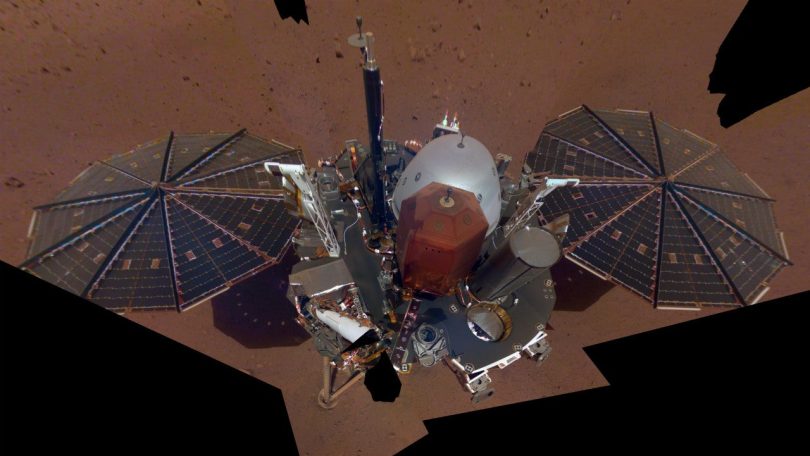[ad_1]

Representational Image
(NASA/JPL-Caltech)
NASA’s Mars InSight lander is set to fall silent in the next few weeks, ending its history-making mission to reveal secrets of the Red Planet’s interior.
The spacecraft’s power generation continues to decline as windblown dust on its solar panels thickens, so the team has taken steps to continue as long as possible with what power remains, the US space agency said in a statement late on Tuesday.
The most important of the final steps with the InSight mission is storing its trove of data and making it accessible to researchers worldwide.
The lander data has yielded details about Mars’ interior layers, its liquid core, the surprisingly variable remnants beneath the surface of its mostly extinct magnetic field, weather on this part of Mars, and lots of quake activity.
InSight’s seismometer has detected more than 1,300 Marsquakes since the lander touched down in November 2018, the largest measuring a magnitude of 5.
“Finally, we can see Mars as a planet with layers, with different thicknesses and compositions. We’re starting to really tease out the details. Now it’s not just this enigma; it’s actually a living, breathing planet,” said Bruce Banerdt of NASA’s Jet Propulsion Laboratory in Southern California.
Earlier this summer, the lander had so little remaining power that the mission turned off all of InSight’s other science instruments to keep the seismometer running.
They even turned off the fault protection system that would otherwise automatically shut down the seismometer if the system detected that the lander’s power generation was dangerously low.
“We were down to less than 20% of the original generating capacity,” said Banerdt. “That means we can’t afford to run the instruments around the clock.”
NASA will declare the mission over when InSight misses two consecutive communication sessions with the spacecraft orbiting Mars, part of the Mars Relay Network. There will be no heroic measures to re-establish contact with InSight. In the meantime, as long as InSight remains in touch, the team will continue gathering data.
**
The above article has been published from a wire source with minimal modifications to the headline and text.
[ad_2]
Source link








